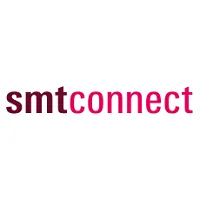
Latest NEWS
Revolutionizing Electronics: Unveiling the Top 5 Key Trends at SMTconnect Nuremberg 2024

Advanced Surface Mount Technology (SMT) at SMTconnect Nuremberg 2024
Revolutionizing Electronics: Unveiling the Top 5 Key Trends at SMTconnect Nuremberg 2024

First and foremost, the integration of artificial intelligence (AI) in SMT processes was a major highlight at the event. AI has the potential to transform the way electronic components are manufactured and assembled. With AI-powered machines, manufacturers can achieve higher levels of precision and efficiency, leading to improved product quality and reduced production costs. The use of AI algorithms also enables real-time monitoring and predictive maintenance, ensuring optimal performance and minimizing downtime.
Another key trend that emerged at SMTconnect Nuremberg 2024 was the increasing adoption of 5G technology in the electronics industry. As the world becomes more connected, the demand for faster and more reliable communication networks is on the rise. 5G technology offers lightning-fast data transfer speeds and ultra-low latency, making it ideal for applications such as autonomous vehicles, smart cities, and the Internet of Things (IoT). At the event, manufacturers showcased their latest 5G-enabled devices and discussed the potential of this technology in transforming various industries.
Furthermore, sustainability was a major focus at SMTconnect Nuremberg 2024. With growing concerns about the environmental impact of electronic waste, manufacturers are striving to develop more eco-friendly solutions. One notable trend in this regard is the use of recyclable and biodegradable materials in electronic components. By incorporating sustainable materials into their products, manufacturers can reduce their carbon footprint and contribute to a greener future. Additionally, energy-efficient designs and processes were also showcased, highlighting the industry’s commitment to sustainability.
In addition to sustainability, miniaturization was another key trend that caught the attention of attendees at SMTconnect Nuremberg 2024. As electronic devices become smaller and more compact, the demand for smaller and more precise components is increasing. Manufacturers showcased their latest advancements in miniaturization, including ultra-thin circuit boards, microchips, and sensors. These advancements not only enable the development of sleeker and more portable devices but also open up new possibilities in fields such as wearable technology and medical devices.
Last but not least, the event highlighted the importance of collaboration and connectivity in the electronics industry. With the rise of Industry 4.0 and the interconnectedness of devices, manufacturers are realizing the need for seamless integration and communication between different components and systems. At SMTconnect Nuremberg 2024, experts discussed the latest advancements in connectivity technologies such as Bluetooth, Wi-Fi, and NFC. These technologies enable devices to communicate with each other, facilitating the development of smart homes, smart cities, and other interconnected ecosystems.
In conclusion, SMTconnect Nuremberg 2024 showcased the top 5 key trends in advanced surface mount technology. From the integration of AI and the adoption of 5G technology to the focus on sustainability, miniaturization, and connectivity, the event provided a glimpse into the future of the electronics industry. As these trends continue to evolve, we can expect to see even more groundbreaking innovations that will revolutionize the way we interact with electronic devices.
Miniaturization and Microelectronics: Key Trends at SMTconnect Nuremberg 2024
Revolutionizing Electronics: Unveiling the Top 5 Key Trends at SMTconnect Nuremberg 2024
The world of electronics is constantly evolving, with new advancements and innovations being unveiled each year. One event that showcases the latest trends in the industry is SMTconnect Nuremberg. In 2024, this renowned trade fair promises to revolutionize the field of electronics with its focus on miniaturization and microelectronics. Let’s delve into the top 5 key trends that will be unveiled at SMTconnect Nuremberg 2024.
First and foremost, miniaturization is set to take center stage at the event. As technology continues to advance, the demand for smaller and more compact electronic devices is on the rise. At SMTconnect Nuremberg 2024, attendees can expect to see a wide range of cutting-edge products that have been miniaturized to fit into the palm of your hand. From smartphones to wearable devices, manufacturers are pushing the boundaries of what is possible in terms of size and functionality.
Accompanying the trend of miniaturization is the rise of microelectronics. This refers to the use of extremely small electronic components and circuits, often on a microscopic scale. SMTconnect Nuremberg 2024 will showcase the latest advancements in microelectronics, including the development of nanoscale transistors and sensors. These tiny components are revolutionizing industries such as healthcare, automotive, and aerospace, enabling the creation of more efficient and powerful devices.
Another key trend at SMTconnect Nuremberg 2024 is the integration of artificial intelligence (AI) into electronic devices. AI has already made significant strides in various fields, and now it is making its way into consumer electronics. Attendees can expect to see smart devices that can learn and adapt to user preferences, making everyday tasks more convenient and efficient. From voice-controlled assistants to self-driving cars, AI is set to transform the way we interact with electronic devices.
In addition to AI, the Internet of Things (IoT) will also be a major focus at SMTconnect Nuremberg 2024. IoT refers to the network of interconnected devices that can communicate and share data with each other. This technology has the potential to revolutionize industries such as healthcare, agriculture, and manufacturing. At the event, attendees can expect to see a wide range of IoT-enabled devices, from smart home appliances to industrial sensors. The integration of IoT into electronic devices opens up a world of possibilities, enabling seamless connectivity and automation.
Last but not least, sustainability will be a key theme at SMTconnect Nuremberg 2024. As the world becomes more conscious of the environmental impact of electronic waste, manufacturers are striving to develop more sustainable products. At the event, attendees can expect to see eco-friendly materials and energy-efficient designs. From recyclable components to renewable energy sources, sustainability is becoming an integral part of the electronics industry.
In conclusion, SMTconnect Nuremberg 2024 promises to unveil the top 5 key trends in the field of electronics. Miniaturization and microelectronics will take center stage, showcasing the latest advancements in size reduction and nanoscale components. The integration of AI and IoT will revolutionize the way we interact with electronic devices, making them smarter and more connected. Lastly, sustainability will be a key theme, highlighting the industry’s commitment to reducing environmental impact. With these trends, the future of electronics is set to be more compact, intelligent, and sustainable than ever before.
Industry 4.0 and Smart Manufacturing in Electronics: Insights from SMTconnect Nuremberg 2024
Revolutionizing Electronics: Unveiling the Top 5 Key Trends at SMTconnect Nuremberg 2024
The electronics industry is constantly evolving, driven by advancements in technology and the demand for smarter, more efficient devices. One event that showcases the latest innovations in the field is SMTconnect Nuremberg, a leading trade fair for surface mount technology and smart manufacturing. In 2024, the event promises to unveil some key trends that will revolutionize the industry, particularly in the realm of Industry 4.0 and smart manufacturing.
First and foremost, the integration of artificial intelligence (AI) and machine learning is set to transform the way electronics are manufactured. AI-powered machines can analyze vast amounts of data in real-time, enabling manufacturers to optimize production processes and improve quality control. This technology has the potential to significantly reduce human error and increase overall efficiency.
Another trend that will be in the spotlight at SMTconnect Nuremberg 2024 is the Internet of Things (IoT). With the increasing number of connected devices, IoT has become a game-changer in the electronics industry. Manufacturers are now able to collect and analyze data from various devices, allowing for predictive maintenance and remote monitoring. This not only improves the performance and lifespan of electronic products but also opens up new possibilities for personalized user experiences.
Furthermore, additive manufacturing, also known as 3D printing, is gaining traction in the electronics industry. This technology enables the production of complex and customized components with greater precision and efficiency. By eliminating the need for traditional manufacturing processes, such as molding and machining, 3D printing reduces production time and costs. At SMTconnect Nuremberg 2024, attendees can expect to see the latest advancements in 3D printing for electronics, including the use of new materials and improved printing techniques.
In addition to AI, IoT, and 3D printing, robotics and automation will play a significant role in shaping the future of electronics manufacturing. Collaborative robots, or cobots, are becoming increasingly popular in the industry due to their ability to work alongside humans safely. These robots can perform repetitive tasks with precision and speed, freeing up human workers to focus on more complex and creative aspects of production. SMTconnect Nuremberg 2024 will showcase the latest advancements in robotics and automation, highlighting their potential to revolutionize the manufacturing process.
Last but not least, sustainability is a key trend that cannot be overlooked. As the world becomes more environmentally conscious, the electronics industry is under pressure to reduce its carbon footprint. At SMTconnect Nuremberg 2024, attendees can expect to see innovative solutions for sustainable manufacturing, such as the use of eco-friendly materials and energy-efficient processes. From recyclable components to renewable energy sources, the industry is embracing sustainability as a core principle.
In conclusion, SMTconnect Nuremberg 2024 promises to unveil some key trends that will revolutionize the electronics industry. From the integration of AI and machine learning to the rise of IoT and additive manufacturing, these advancements will shape the future of electronics manufacturing. Robotics and automation will also play a significant role, while sustainability will be a key focus for the industry. As technology continues to advance, events like SMTconnect Nuremberg provide a platform for industry professionals to stay informed and inspired, driving innovation and progress in the field of electronics.
Test and Inspection Solutions for PCB Assembly: Highlights from SMTconnect Nuremberg 2024
The SMTconnect Nuremberg 2024 event showcased the latest advancements in the electronics industry, with a particular focus on test and inspection solutions for PCB assembly. This section highlights the top 5 key trends that were unveiled at the event, revolutionizing the way electronics are manufactured and tested.
Firstly, one of the major trends in test and inspection solutions is the integration of artificial intelligence (AI) and machine learning (ML) technologies. These technologies have the potential to greatly enhance the efficiency and accuracy of PCB assembly testing. By analyzing vast amounts of data, AI and ML algorithms can identify patterns and anomalies that may be missed by human operators. This not only improves the quality of the final product but also reduces the time and cost associated with testing.
Another trend that was evident at SMTconnect Nuremberg 2024 is the increasing use of automated optical inspection (AOI) systems. AOI systems use high-resolution cameras and advanced image processing algorithms to detect defects in PCBs. These systems can quickly and accurately identify issues such as soldering defects, component misalignment, and missing components. The integration of AI and ML technologies further enhances the capabilities of AOI systems, allowing them to learn from previous inspections and improve their defect detection capabilities over time.
In addition to AOI systems, X-ray inspection systems were also a highlight at the event. X-ray inspection is particularly useful for detecting defects that are not visible to the naked eye, such as hidden solder joints and voids in solder connections. The latest X-ray inspection systems showcased at SMTconnect Nuremberg 2024 offer higher resolution and faster scanning speeds, enabling manufacturers to quickly identify and rectify any issues in the PCB assembly process.
Furthermore, the event showcased advancements in functional testing solutions for PCB assembly. Functional testing involves testing the functionality of the assembled PCBs to ensure that they meet the required specifications. The latest functional testing systems showcased at SMTconnect Nuremberg 2024 offer increased flexibility and scalability, allowing manufacturers to easily adapt to changing product requirements. These systems also integrate with other test and inspection solutions, providing a comprehensive testing solution for PCB assembly.
Lastly, the event highlighted the importance of data analytics in test and inspection solutions. With the increasing complexity of PCB assemblies, manufacturers are generating vast amounts of data during the testing process. The latest test and inspection solutions showcased at SMTconnect Nuremberg 2024 offer advanced data analytics capabilities, allowing manufacturers to gain valuable insights from this data. By analyzing trends and patterns, manufacturers can identify areas for improvement in the PCB assembly process and optimize their testing strategies.
In conclusion, the SMTconnect Nuremberg 2024 event unveiled several key trends in test and inspection solutions for PCB assembly. The integration of AI and ML technologies, the advancements in AOI and X-ray inspection systems, the improvements in functional testing solutions, and the importance of data analytics were all highlighted at the event. These trends are revolutionizing the electronics industry, enabling manufacturers to produce high-quality PCB assemblies more efficiently and effectively. As the industry continues to evolve, it is clear that test and inspection solutions will play a crucial role in ensuring the reliability and performance of electronic devices.
Assembly Automation and Robotics in Electronics Manufacturing: Innovations at SMTconnect Nuremberg 2024
Assembly Automation and Robotics in Electronics Manufacturing: Innovations at SMTconnect Nuremberg 2024
The electronics manufacturing industry is constantly evolving, with new technologies and innovations revolutionizing the way products are assembled. One event that showcases these advancements is SMTconnect Nuremberg, a leading trade fair for surface mount technology and electronics manufacturing. In 2024, the event promises to unveil the top five key trends in assembly automation and robotics, which are set to transform the industry.
Firstly, the integration of artificial intelligence (AI) and machine learning (ML) into assembly automation processes is a game-changer. AI and ML algorithms can analyze vast amounts of data in real-time, enabling machines to make intelligent decisions and adapt to changing production requirements. This not only improves efficiency but also enhances quality control, as machines can detect and rectify errors with minimal human intervention.
Secondly, collaborative robots, also known as cobots, are gaining traction in the electronics manufacturing sector. Unlike traditional industrial robots, cobots are designed to work alongside humans, enhancing productivity and safety. These robots can perform repetitive tasks with precision and speed, freeing up human workers to focus on more complex and creative aspects of production. At SMTconnect Nuremberg 2024, attendees can expect to see the latest advancements in cobot technology, including improved sensing capabilities and enhanced human-robot interaction.
Another trend that will be showcased at the event is the use of advanced vision systems in assembly automation. Vision systems equipped with high-resolution cameras and sophisticated image processing algorithms can accurately inspect and identify components, ensuring precise placement and alignment during assembly. These systems can also detect defects and anomalies, reducing the risk of faulty products reaching the market. With continuous advancements in vision technology, manufacturers can expect improved accuracy and efficiency in their assembly processes.
Furthermore, the adoption of flexible manufacturing systems (FMS) is on the rise in the electronics manufacturing industry. FMS allows for the seamless integration of various automated processes, such as assembly, testing, and packaging, into a single production line. This enables manufacturers to quickly adapt to changing product demands and reduce time-to-market. At SMTconnect Nuremberg 2024, attendees can explore the latest FMS solutions, including modular and scalable systems that can be easily customized to meet specific production requirements.
Lastly, the industry is witnessing a shift towards the use of additive manufacturing, commonly known as 3D printing, in electronics assembly. 3D printing enables the production of complex and customized components with reduced material waste and lead times. This technology is particularly beneficial for prototyping and small-scale production, as it eliminates the need for expensive tooling and molds. At SMTconnect Nuremberg 2024, visitors can witness the latest advancements in 3D printing for electronics manufacturing, including the use of conductive and flexible materials.
In conclusion, assembly automation and robotics are undergoing significant transformations in the electronics manufacturing industry. The top five key trends to be unveiled at SMTconnect Nuremberg 2024 include the integration of AI and ML, the rise of collaborative robots, advanced vision systems, flexible manufacturing systems, and the adoption of additive manufacturing. These innovations promise to enhance efficiency, quality control, and customization capabilities in electronics assembly. Attendees of the event can expect to witness cutting-edge technologies that will shape the future of the industry.


